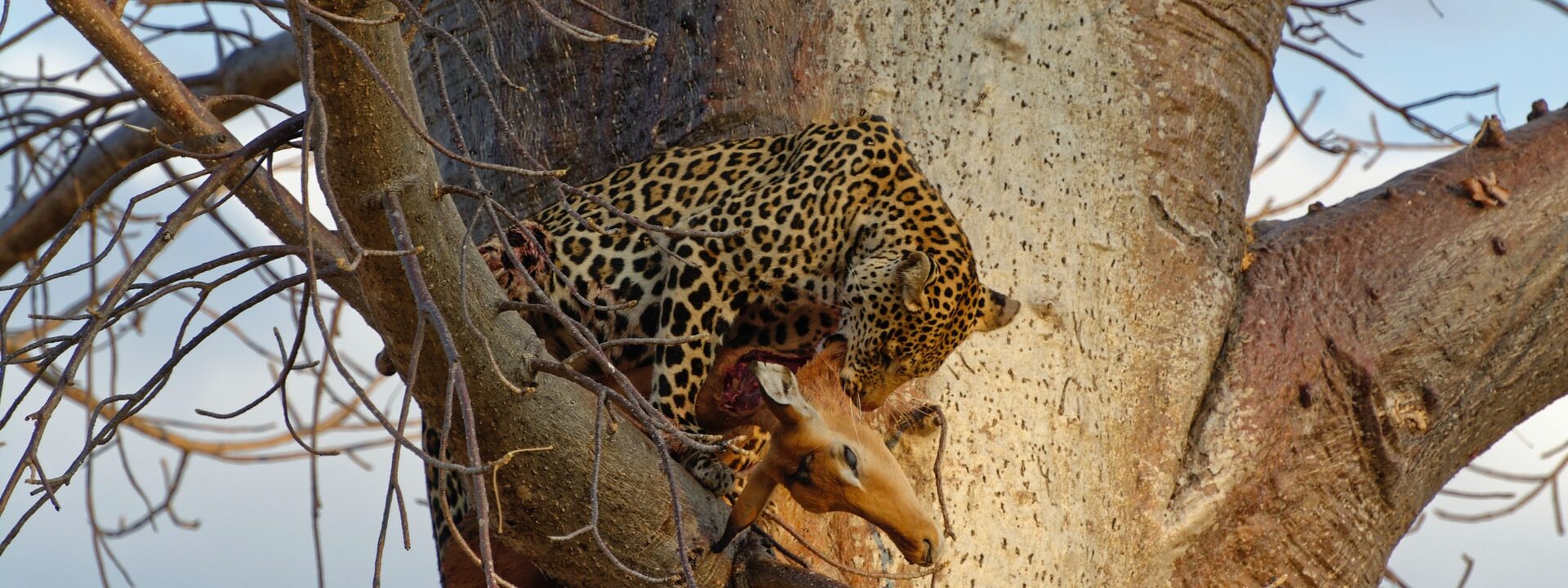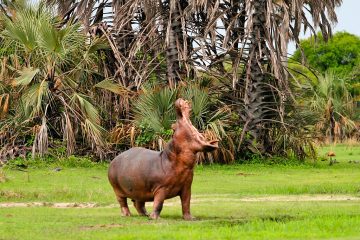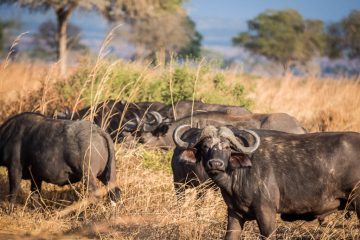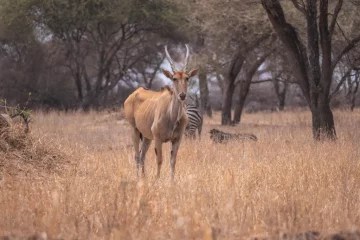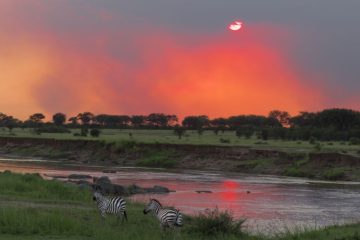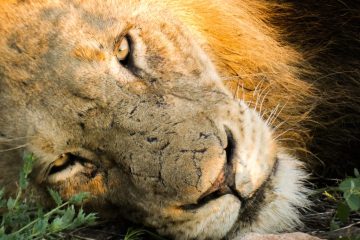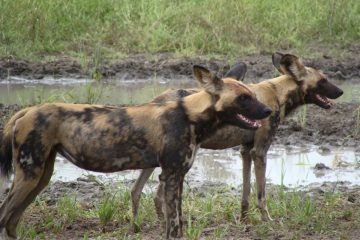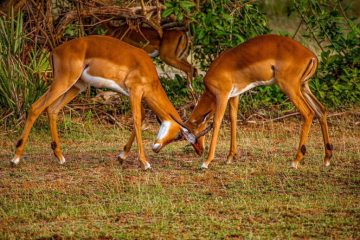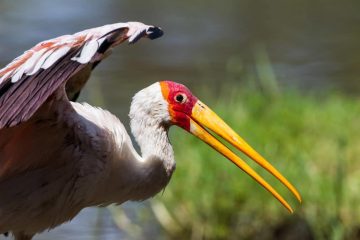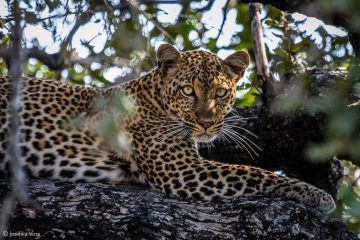Planning your Southern Tanzania Safari
Starting a Southern Tanzania safari from Dar es Salaam is a popular choice for travelers, as the city is well-connected and serves as a gateway to many safari destinations in the south. Here’s a step-by-step guide on how to begin your safari adventure from Dar es Salaam:
- Plan Your Safari: Research and decide on the specific national parks or game reserves you want to visit in Southern Tanzania. Popular destinations include Selous Game Reserve, Ruaha National Park, and Mikumi National Park.
- Choose a Safari Operator: Look for reputable safari operators that offer Southern Tanzania safaris from Dar es Salaam. Read reviews, compare prices, and check the itineraries to find one that suits your preferences and budget.
- Book in Advance: Once you’ve selected a safari operator, book your safari in advance to secure your spot, especially during peak tourist seasons.
- Transportation to the Safari Destination: Most Southern Tanzania safaris include transportation from Dar es Salaam to the safari destination. Depending on your chosen park, you will travel by road, air, or a combination of both.
- By Road: Some parks, like Mikumi, can be reached by road from Dar es Salaam. The drive takes approximately 5-6 hours.
- By Air: For more remote parks like Selous and Ruaha, you may take a domestic flight from Dar es Salaam to nearby airstrips. The flight duration is typically around 1-2 hours.
- Meet Your Safari Guide: Upon arrival at your chosen destination, you’ll be greeted by your safari guide or representative from the safari operator. They will be your knowledgeable companion throughout the safari.
- Safari Activities: Enjoy a variety of safari activities, including game drives, boat safaris (in Selous), walking safaris, and more. Your guide will take you to the best spots to witness the incredible wildlife and landscapes of Southern Tanzania.
- Accommodation: Your safari operator will arrange your accommodation in lodges, camps, or tented camps within or near the national parks. Relax and immerse yourself in the wilderness while enjoying the comfort of your chosen accommodation.
- Return to Dar es Salaam: After your Southern Tanzania safari, you’ll be transported back to Dar es Salaam either by road or air, depending on your itinerary.
Keep in mind that Southern Tanzania safaris offer a more secluded and off-the-beaten-path experience compared to the popular Northern Circuit. This region is known for its vast wilderness and diverse wildlife, making it a unique and memorable safari destination.
What is so unique about Southern Tanzania?
Southern Tanzania is unique for several reasons, making it a special and distinct safari destination in Africa. Here are some of the key aspects that set it apart:
- Remote Wilderness: Southern Tanzania is known for its vast and untouched wilderness areas. Unlike the more popular northern circuit, the southern parks and reserves offer a sense of seclusion and exclusivity, allowing visitors to experience a more authentic and less crowded safari.
- Wildlife Diversity: The region is home to an incredible diversity of wildlife, including large populations of elephants, lions, leopards, buffalos, and other iconic African animals. The parks in Southern Tanzania provide excellent opportunities to spot these animals in their natural habitats.
- Off-the-Beaten-Path Adventures: Travelers who visit Southern Tanzania often seek a more adventurous and off-the-beaten-path experience. The rugged landscapes, remote locations, and fewer visitors make it ideal for those looking to explore lesser-known areas.
- Pristine Nature and Scenery: Southern Tanzania boasts stunning landscapes, including vast savannahs, rolling hills, lush forests, and picturesque rivers. The scenery is truly breathtaking and adds to the overall safari experience.
- Walking Safaris: Some parks in Southern Tanzania, such as Selous Game Reserve, offer guided walking safaris, allowing visitors to explore the wilderness on foot and have a closer connection with nature.
- Boat Safaris: The presence of large rivers and lakes in the southern parks enables boat safaris, providing a unique perspective and a chance to observe wildlife from the water.
- Cultural Encounters: Southern Tanzania offers opportunities to interact with local communities and experience authentic African culture. Visitors can engage in cultural tours and learn about traditional customs and ways of life.
- Birdwatching Paradise: The region is a haven for birdwatchers, with an impressive variety of bird species, including many endemic and migratory birds.
- Conservation Efforts: Southern Tanzania is dedicated to conservation efforts and sustainable tourism. The parks and reserves prioritize protecting the environment and wildlife, ensuring a positive impact on the ecosystem.
- Exclusive Accommodations: Lodges and camps in Southern Tanzania often cater to a smaller number of guests, providing a more intimate and personalized safari experience.
Overall, Southern Tanzania offers a rare chance to immerse oneself in the untouched beauty of Africa and witness its wildlife in a tranquil and less commercialized setting. It is a destination that appeals to nature enthusiasts, adventure seekers, and those seeking an authentic safari experience away from the crowds.
Best time to go on a Southern Tanzania safari
The best time to go on a Southern Tanzania safari is during the dry season, which typically falls between June and October. This period offers the most favorable conditions for wildlife viewing and an overall enjoyable safari experience. Here’s why the dry season is preferred:
- Wildlife Concentration: As the dry season progresses, water sources in the parks and reserves become limited, causing animals to gather around these waterholes and rivers. This concentration of wildlife makes it easier for safari-goers to spot and observe a variety of animals, including predators and herbivores.
- Clear Visibility: With less foliage and thinner vegetation during the dry season, visibility is improved, making it easier to spot animals from a distance.
- Comfortable Temperatures: The dry season in Southern Tanzania is characterized by mild temperatures, making it more comfortable for safari activities such as game drives and walking safaris.
- Minimal Mosquitoes: The drier conditions also mean fewer mosquitoes and a reduced risk of malaria, enhancing the overall safari experience.
- Photographic Opportunities: The clear skies and good lighting during the dry season provide excellent opportunities for capturing stunning photographs of wildlife and landscapes.
- Accessibility: Many of the roads and tracks in the parks are easier to navigate during the dry season, allowing for smoother and more efficient game drives.
While the dry season is generally considered the best time for a Southern Tanzania safari, it is worth noting that the region offers year-round wildlife viewing opportunities. The wet season, from November to May, can still be rewarding for safaris, as it brings lush green landscapes, newborn wildlife, and the presence of migratory birds.
It’s essential to consider personal preferences, interests, and priorities when planning a safari. Whether you choose the dry or wet season, a Southern Tanzania safari promises a unique and unforgettable wildlife adventure in one of Africa’s most pristine and remote regions.
Getting there
Getting to Southern Tanzania for a safari typically involves flying into one of the major airports and then transferring to your chosen safari destination. Here are the general steps on how to get there:
- International Flight: Start by booking a flight to one of the major international airports in Tanzania. The main airports you can fly into are Julius Nyerere International Airport (DAR) in Dar es Salaam and Kilimanjaro International Airport (JRO) near Arusha. Some flights from other countries may also land in Zanzibar (ZNZ), and you can connect to mainland Tanzania from there.
- Domestic Flight: From Dar es Salaam or Arusha, you’ll need to take a domestic flight to reach the southern safari destinations. The primary airports serving Southern Tanzania are Mwalimu Julius Kambarage Nyerere International Airport (DAR) in Dar es Salaam and Songwe Airport (MBI) in Mbeya.
- Transfer to Safari Destination: After landing at the airport, you’ll be met by your safari operator or lodge representative, who will arrange a transfer to your chosen safari destination. This transfer may involve a short flight or a road journey, depending on the location of your safari camp or lodge.
- Safari Experience: Once you reach your destination, you’ll embark on an exciting safari adventure in the pristine wilderness of Southern Tanzania. The region is home to renowned national parks and game reserves, such as Selous Game Reserve, Ruaha National Park, and Mikumi National Park, offering fantastic wildlife viewing opportunities.
It’s important to plan your travel in advance and choose a reputable safari operator to ensure a smooth and enjoyable journey. Domestic flights within Tanzania can get busy during peak travel seasons, so it’s advisable to book your flights and accommodations well in advance. Additionally, make sure to check visa requirements and any necessary health precautions before traveling to Tanzania.
Southern Tanzania offers a unique and less crowded safari experience compared to the more popular Northern Circuit. With its vast landscapes, diverse wildlife, and stunning scenery, a safari in Southern Tanzania promises an unforgettable African adventure.
Southern Tanzania Safari Destinations
Southern Tanzania is home to several incredible safari destinations, each offering a unique and diverse wildlife experience. Some of the prominent destinations in the region include:
- Selous Game Reserve: As one of the largest game reserves in Africa, Selous is a UNESCO World Heritage Site known for its vast wilderness and abundant wildlife. The reserve is characterized by its meandering rivers, dense woodlands, and open savannahs, making it an ideal habitat for elephants, lions, leopards, hippos, crocodiles, and a wide variety of bird species.
- Ruaha National Park: With its rugged landscapes and baobab-dotted plains, Ruaha is the largest national park in Tanzania. It is renowned for its diverse wildlife, including large herds of elephants, buffalo, giraffes, and antelopes. The park is also home to predators like lions, leopards, cheetahs, and wild dogs.
- Mikumi National Park: Located closer to Dar es Salaam, Mikumi is a popular destination for short safaris and day trips. Despite its smaller size, the park boasts an impressive array of wildlife, including elephants, zebras, wildebeests, impalas, and a rich variety of birdlife.
- Udzungwa Mountains National Park: For nature enthusiasts and hikers, Udzungwa offers lush rainforests, cascading waterfalls, and diverse flora and fauna. It is a paradise for trekking and a chance to spot rare primates such as the Udzungwa red colobus monkey.
- Saadani National Park: Situated along the Indian Ocean coast, Saadani is unique as it offers a mix of bush and beach experiences. Visitors can enjoy game drives and boat safaris along the Wami River, with opportunities to see elephants, hippos, crocodiles, and various bird species, and then relax on the pristine white sandy beaches.
Southern Tanzania’s parks and reserves offer a more remote and less crowded safari experience compared to the Northern Circuit. They are known for their untouched wilderness, excellent game viewing, and opportunities for walking safaris and boat excursions. The region’s diverse landscapes and rich biodiversity make it a hidden gem for safari enthusiasts seeking a more off-the-beaten-path adventure.
Where to stay on a Southern Tanzania Safari
Southern Tanzania offers a range of accommodation options for safari enthusiasts, catering to different budgets and preferences. Here are some popular places to stay during a Southern Tanzania safari:
- Luxury Lodges and Camps: There are several luxury lodges and tented camps located within the national parks and reserves. These accommodations offer spacious and elegant rooms, often with private verandas overlooking the wilderness. Some luxury lodges also provide amenities like swimming pools, spa facilities, and gourmet dining. Examples include Selous Serena Camp, Jongomero Camp in Ruaha, and Mikumi Wildlife Camp.
- Mid-Range Lodges and Camps: For those seeking comfort and value, mid-range lodges and camps provide comfortable rooms or tents with en-suite facilities. These accommodations maintain a good standard of service and amenities, ensuring a pleasant safari experience. Examples include Selous Kinga Lodge, Ruaha Hilltop Lodge, and Vuma Hills Tented Camp.
- Budget Camps and Tented Camps: Travelers on a tighter budget can find affordable tented camps and basic lodges near the parks. These options offer comfortable beds, simple facilities, and an authentic safari experience without the frills. Examples include Selous Impala Camp, Ruaha River Lodge, and Tan Swiss Lodge.
- Mobile Tented Camps: Some safari operators offer mobile tented camps that move seasonally to follow the wildlife’s movements. These camps provide a more adventurous experience, allowing guests to be closer to nature and wildlife. Examples include Sand Rivers Selous and Kwihala Camp in Ruaha.
- Private Luxury Villas: For those seeking ultimate exclusivity, some lodges offer private luxury villas with personalized services, ideal for honeymooners or small groups of family and friends. Examples include Beho Beho Private Villa in Selous and Jabali Private House in Ruaha.
Regardless of the accommodation type, staying within or close to the national parks and reserves ensures an immersive safari experience, with the opportunity to observe wildlife and soak in the natural beauty of Southern Tanzania. It’s advisable to book accommodations well in advance, especially during peak seasons, to secure the best options for your safari adventure.

